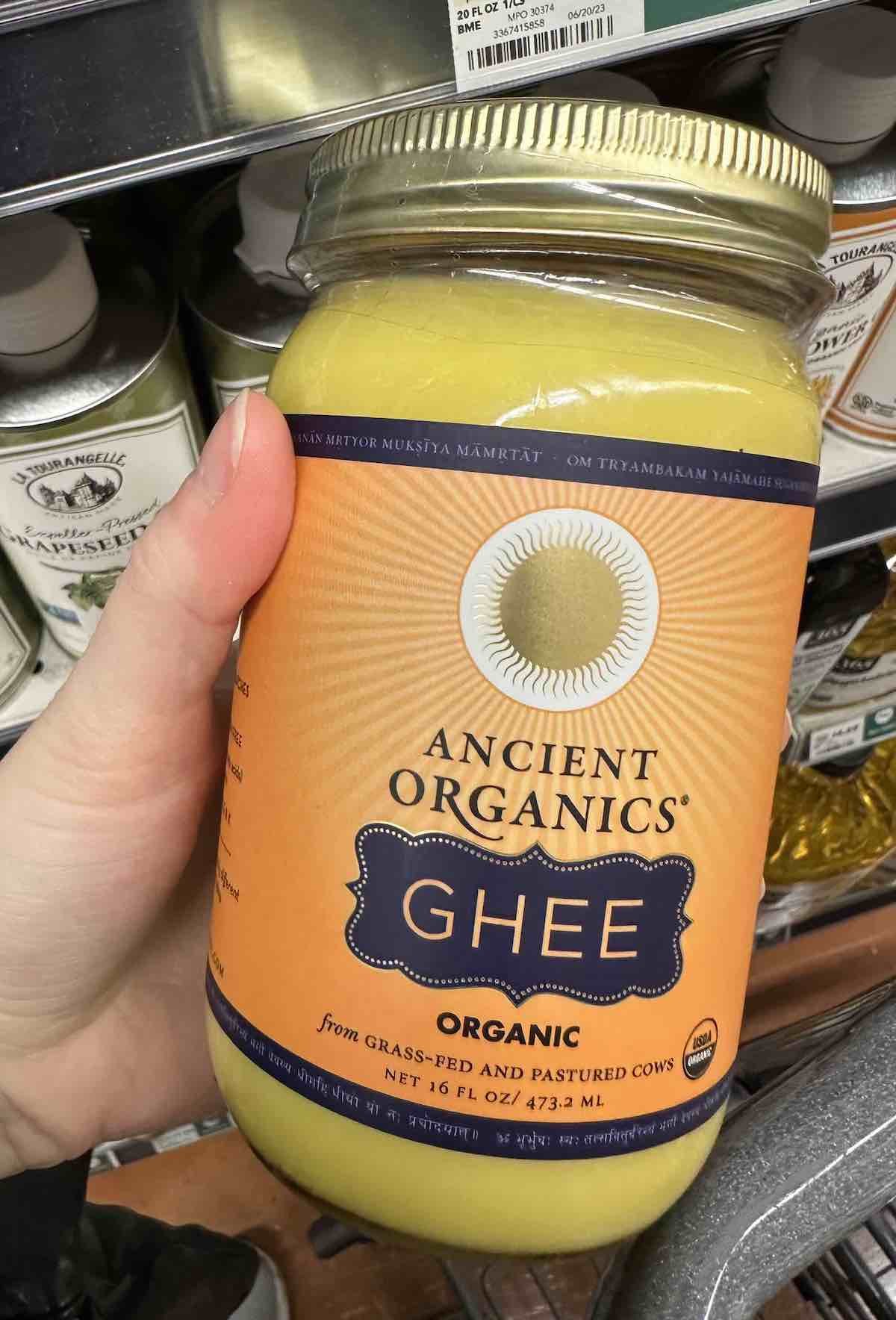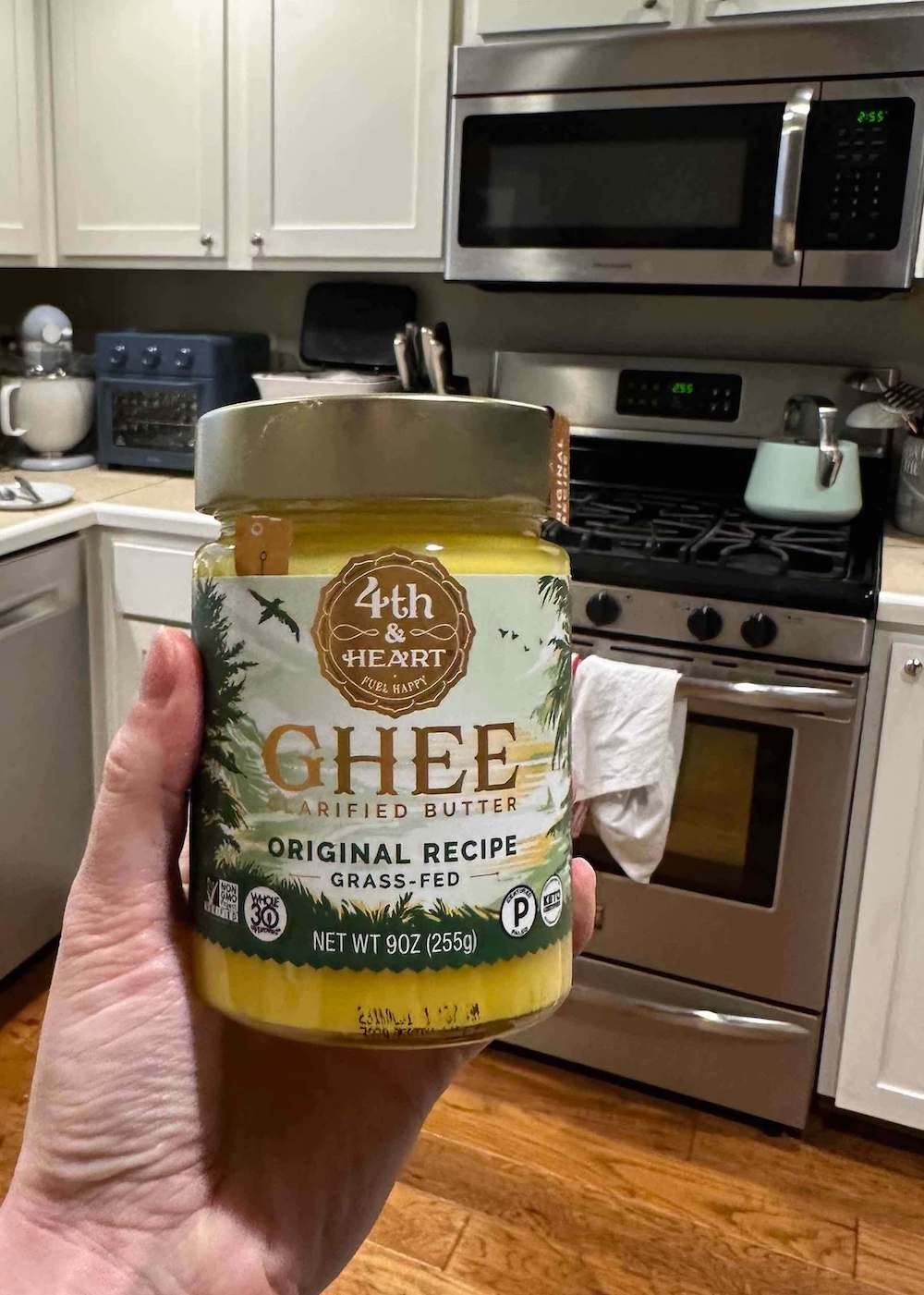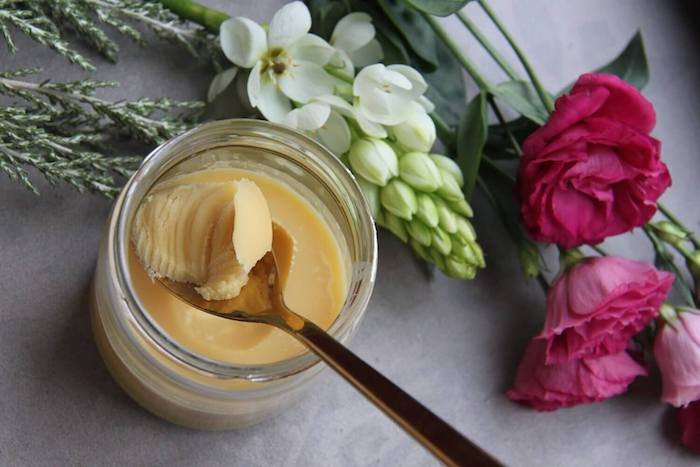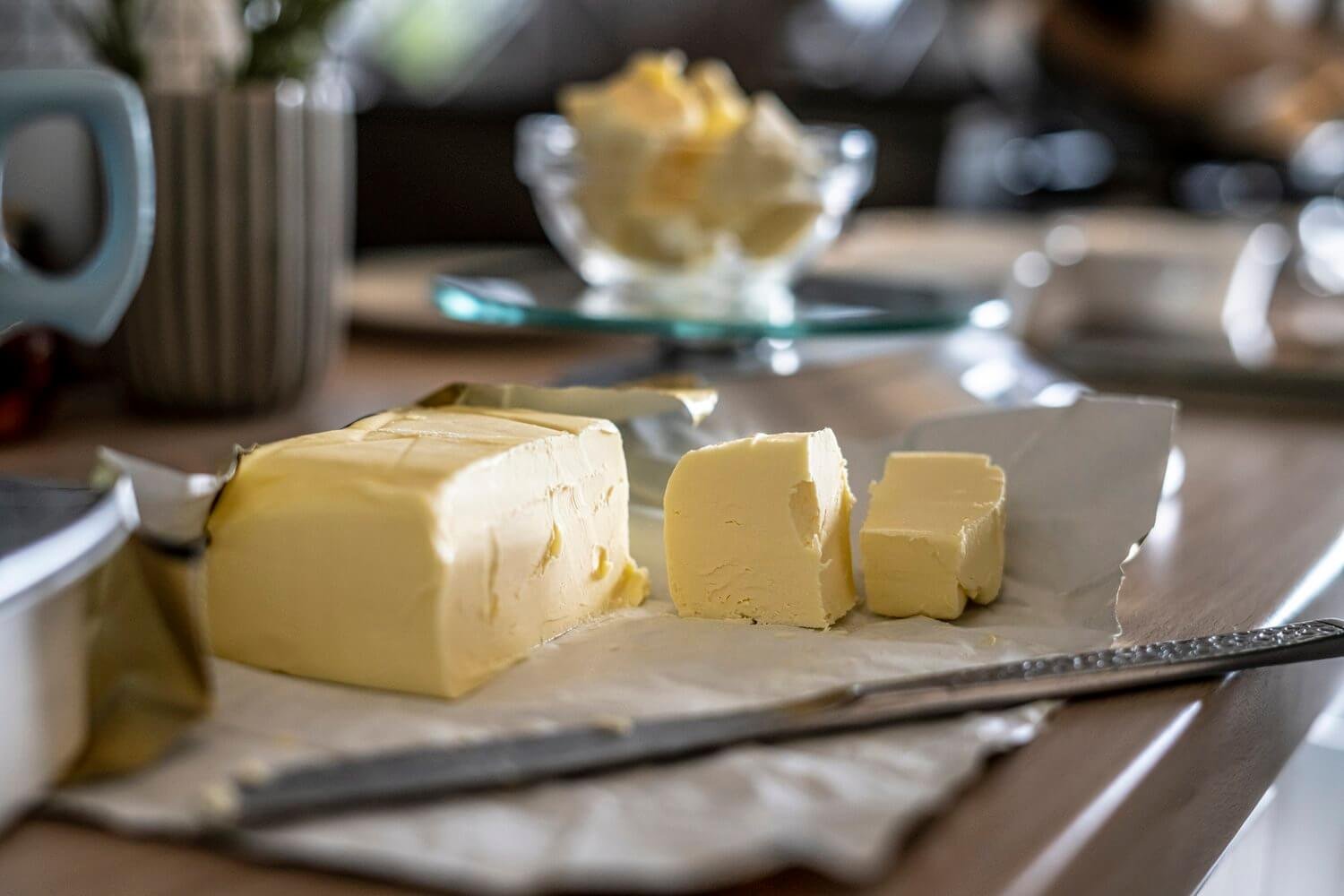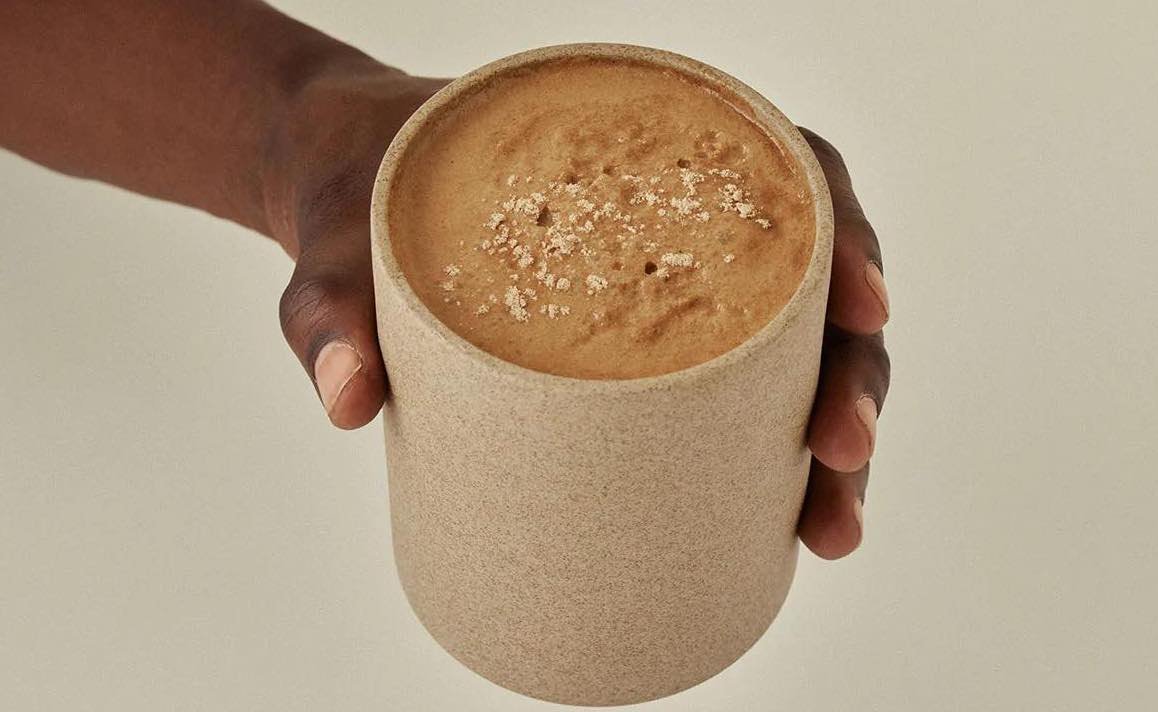The 6 Best Grass-Fed Organic Ghee Brands for Clean Eating
A staple in Indian culture and cooking, ghee is a versatile fat that can be used as a replacement for butter or cooking oil.
It’s amazing drizzled over popcorn, smeared on toast, or when used to sear a steak – and with its high smoking point, it’s ideal for high heat cooking methods such as sautéing, stir-frying, or even deep frying.
Ghee is also a popular ingredient in Ayurvedic medicine, as well as in skin and hair care products.
Pin this organic food guide for later
I’ve been using ghee in my kitchen for about three years and am excited to share some of my favorite organic ghee brands as well as provide an overview of what ghee is and potential benefits!
This post does contain some affiliate links which means The Honest Consumer may receive a commission if you decided to purchase. Our commission is at no additional expense to you!
The 6 Best Organic Grass-Fed Ghee Brands to Try
If you're interested in trying ghee, but not sure where to start we've made a list of some of the best ghee brands.
These organic ghee brands all create a reliable product that is great for cooking!
Organic Valley’s USDA Certified Organic Ghee
Price Range: Around $12-$15
Certified organic by the USDA, Organic Valley ghee is made using butter from pasture-raised, grass-fed cows.
Organic Valley is farmer-owned, implementing practices that support animals and the environment such as regenerative and rotational grazing, planting riparian buffers, eliminating toxic chemicals, and using solar energy.
I've purchased Organic Valley ghee at my local Whole Foods grocery store and online at Thrive Market.
Why I Love This Brand: We have a lot of Organic Valley products in our kitchen. I have tried and enjoyed their ghee. I think it’s usually pretty easy to find in grocery stores which makes this a great option.
Ancient Organics Ghee Made with Traditional Methods
Price Range: Around $13-$109
Made over an open flame, Ancient Organics produces organic ghee using traditional methods the founders, two Ayurvedic practitioners, learned in India.
Cooked in a peaceful kitchen, their ghee is made from northern California dairy whose native wildflowers and sweet grasses provide a unique terroir.
Ancient Organics works with the certified organic dairy and creamery, the Strauss Family Creamery. They produce 100% organic sweet cream butter from cows that have been grass-fed and pasture-raised.
Additionally, Strauss uses electricity generated from solar panels and methane from cow manure. They also reuse 94% of the creamery’s water to generate electricity and irrigate fields. Ancient Organics ghee can be purchased in select grocery stores or online for $13 a jar.
Why I Recommend: I sincerely appreciate how sustainability is rooted within Ancient Organics supply chain with electricity, water, and grass-fed cows.
4th & Heart’s grass fed Ghee
Price Range: $11-$30
While not certified organic, 4th & Heart’s lactose-free ghee comes from grass-fed, pasture raised, antibiotic and hormone free New Zealand cows.
Their ghee is made the old fashioned way and is Certified Keto, Paleo, Gluten Free, Ayurvedic, Whole 30, and FODMAP friendly.
This ghee can easily be found on Thrive Market, Amazon, Whole Foods, or at select grocery stores.
Why I Love This Brand: 4th & Heart ghee is what I currently have in my kitchen! I cook eggs with it almost every morning! I love the buttery taste.
Thrive Market’s Store Brand of Grass Fed Ghee
Price Range: $10-$16
Thrive Market's online marketplace offers a range of products that cater to many diets and lifestyles including keto, paleo, and vegetarian.
Their organic ghee is made from butter sourced from grass-fed cows and also comes in additional flavors: ghee with Himalayan pink salt and ghee with virgin coconut oil.
Their environmental and sustainability practices include diverting 90% of their waste to be recycled, composted, or reused.
Thrive Market's store brand of ghee can be purchased for $11 a jar and it Whole30 Approved & USDA Certified Organic.
Along with their own brand of ghee, Thrive Market also carries other brands of ghee. This marketplace is a great place to look if you're exploring multiple different brands.
Why I Love This Brand: I’m a big Thrive Market shoppers, so this is a really convenient option! It’s also one of the more affordable ghee options too! I have tried Thrive Market’s ghee and it is a great staple to have in your kitchen!
Also, be sure to check out my Thrive Market review & use my referral link for 40% off your first order.
Pure Indian Foods Ghee & Asian Grocery Products
Price Range: $12-$20
Pure Indian Foods features Curated, Ethically-Sourced Organic Indian & Asian Grocery Products from a 5th Generation Family-Owned Business.
Pure Indian Foods values supporting the local economy and creating a business in a sustainable manner for other people and the planet.
Their ghee is made with milk sourced from small family farms in the United States. Their ghee products are made ghee products with pride in New Jersey with organic methods.
Why I Recommend: I sincerely appreciate that this is a 5th Generation Family-Owned Business. While I haven’t personally tried this brand of ghee, it has wonderful reviews with hundreds of customers stating how high quality and tasty their ghee is.
Gold Nugget Organic Ghee with Different Flavors
Price Range: $12-$46
Based in Arcata, California, Gold Nugget offers ghee made from cow’s milk, as well as goat and yak’s milk, and comes in a variety of flavors including turmeric, chocolate, and mushroom.
They source their organic butter from farms in Humboldt and Del Norte County, goat butter from Washington State, and yak butter from pastoral nomads in Mongolia.
Their ghee is pasture-raised with most of their flavors certified by the USDA and CCOF.
Why I Recommend: This organic ghee brand has some incredibly unique flavors!
Golden Monkey’s Ghee Made from Organic Butter from Family Owned Farms
Price Range: Around $24+
Offering a variety of flavors – such as turmeric and black pepper, and curry masala – Golden Monkey’s ghee is made from grass-fed organic butter sourced from 100% family-owned farms.
Using Ayurveda-inspired techniques, their ghee is made in small batches and includes a hint of moringa, which also has various health benefits.
Why I Recommend This: I really appreciate that this ghee is made in small batches in partnership with family owned farms. Supporting family owned businesses is a big part of conscious consumerism.
How is Ghee Made?
Ghee is clarified butter but taken a step further. When butter is clarified, it’s heated in order to remove the milk solids and water.
But when making ghee, the butter is heated for longer, acquiring a toasty aroma, golden brown color, and nutty flavor.
Ghee has a long shelf life and remains soft at room temperature, turning firm and granular in the fridge.
It has only one ingredient – high-quality, unsalted butter, made from cow’s milk; but you get different varieties.
There’s cultured ghee made from fermented cream, ghee made from other milk (like goat, yak, or buffalo), and even varieties flavored with assorted herbs and spices.
Once made this natural product can be used similar to how butter, vegetable oil, and olive oil are used.
How is Ghee Different from Butter
Ghee and butter are both derived from milk, so they are very similar.
They are also used in much the same way when cooking and frying.
Ghee can even be used in baking and Indian cuisine has a delicious range of sweetmeats using ghee, including barfi, gulab jamun, and chana magaj.
So you can also use it for your muffins, cookies, cakes, and even bread, lasagne, and casseroles.
However, there are a few differences between butter and ghee.
While butter has a slightly sweet taste, ghee has a richer, nuttier flavor, with clarified butter being more neutral because it isn’t heated for as long.
Ghee’s has a higher smoke point at around 450°F and whereas butter’s smoke point is 350°F.
Ghee is pure fat and has more calories per tablespoon than butter. But at 120 calories per tablespoon as opposed to butter’s 102, the difference is negligible.
Is Ghee Healthy?
Both butter and ghee can form part of a healthy, balanced diet, but should be consumed in moderation.
The advantage of ghee is that because the milk solids are removed, it can be used as an alternative for those who are sensitive to lactose.
However, while it is has no or less lactose, it is not vegan, as it’s sourced from an animal product.
Ghee contains short- and medium-chain fatty acids such as omega-3s and butyric acid, which are linked to heart health and a strong immune system.
The various vitamins found in ghee include vitamin K2 which can promote dental and bone health, as well as vitamins A, D, and E which are good for hair and skin health – hence its popularity in personal care products. Ghee also contains less acrylamide, a toxic compound formed in some starchy foods when fried.
A high-quality butter is favored for ghee and all the better if it’s made from organic, grass-fed milk.
The latter comes from cows that have lived a stress-free existence roaming free and grazing on pastures instead of grain, improving the quality of the milk and providing more nutrients. .
Organic ghee also indicates that the cows should be free from antibiotics and growth hormones. The organic label does not just refer to the cows’ diet, but to farming practices as well, which can support a healthier ecosystem.
Environmental Benefits of Organic Grass-Fed Ghee
Organic, grass-fed cows graze freely on pastures. Furthermore, to be considered organic, these pastures should be free of GMOs, as well as synthetic fertilizers and pesticides.
The reduction or elimination of toxic chemicals improves the air, soil, and water quality, decreasing air and water pollution while boosting soil fertility, thus increasing plant nutrient uptake.
While organic agriculture has its boons, it’s important to bear in mind that animal agriculture has a significant impact on the environment.
For both the sake of your health and that of the planet, ghee should be used in moderation.
Requiring only one ingredient, ghee is easy enough to make at home. There are also several organic, grass-fed ghee brands you can buy.
Sourced from organic milks, these brands implement additional eco-friendly measures to further support the protection of the environment.
How to Make Your Own Ghee
If you're more of a DIY person making your own ghee can be a great way to use th e butter that is already in your fridge and create flavorful ghee to keep in your kitchen.
To make ghee at home, start by heating up some butter in a pot on the stove. It's best to use butter from organic grass fed cows.
Once it is melted, continue to cook it over low heat until it becomes a golden brown color and has a nutty aroma.
At that point, remove it from the heat and strain it through a fine mesh sieve to remove any impurities.
Finally, store your ghee in a glass jar in a dry place at room temperature or in the fridge to make the ghee last longer.
Hopefully this guide has helped further your knowledge on ghee. If you decide to give ghee a try, do your best to choose organic grass fed ghee as a way to value your health and the environment.
MEET THE AUTHORS
Product Trial:
Emily Waddell is the founder of The Honest Consumer. She has always been passionate about business for good and has a Bachelor degree in Social Entrepreneurship. She currently lives in Seattle where she practices imperfect sustainability. When she’s not writing, Emily enjoys supporting small businesses, clean eating, & practicing slow living. Learn more about Emily’s journey starting The Honest Consumer.
Industry Research:
Claudia Hauter is a South African writer, copy editor, and content creator with degrees in Drama and Anthropology. She works in television managing web content. When she isn’t reading or writing, she’s walking her dog, finding small businesses and markets to support, or attracting butterflies and bees with her vegetable garden. Learn from Claudia on Twitter or Instagram.
For more ethical & sustainable fashion tips be sure to follow The Honest Consumer on social media, subscribe to our newsletter, & check out the Ethical & Sustainable Brand Directory.



